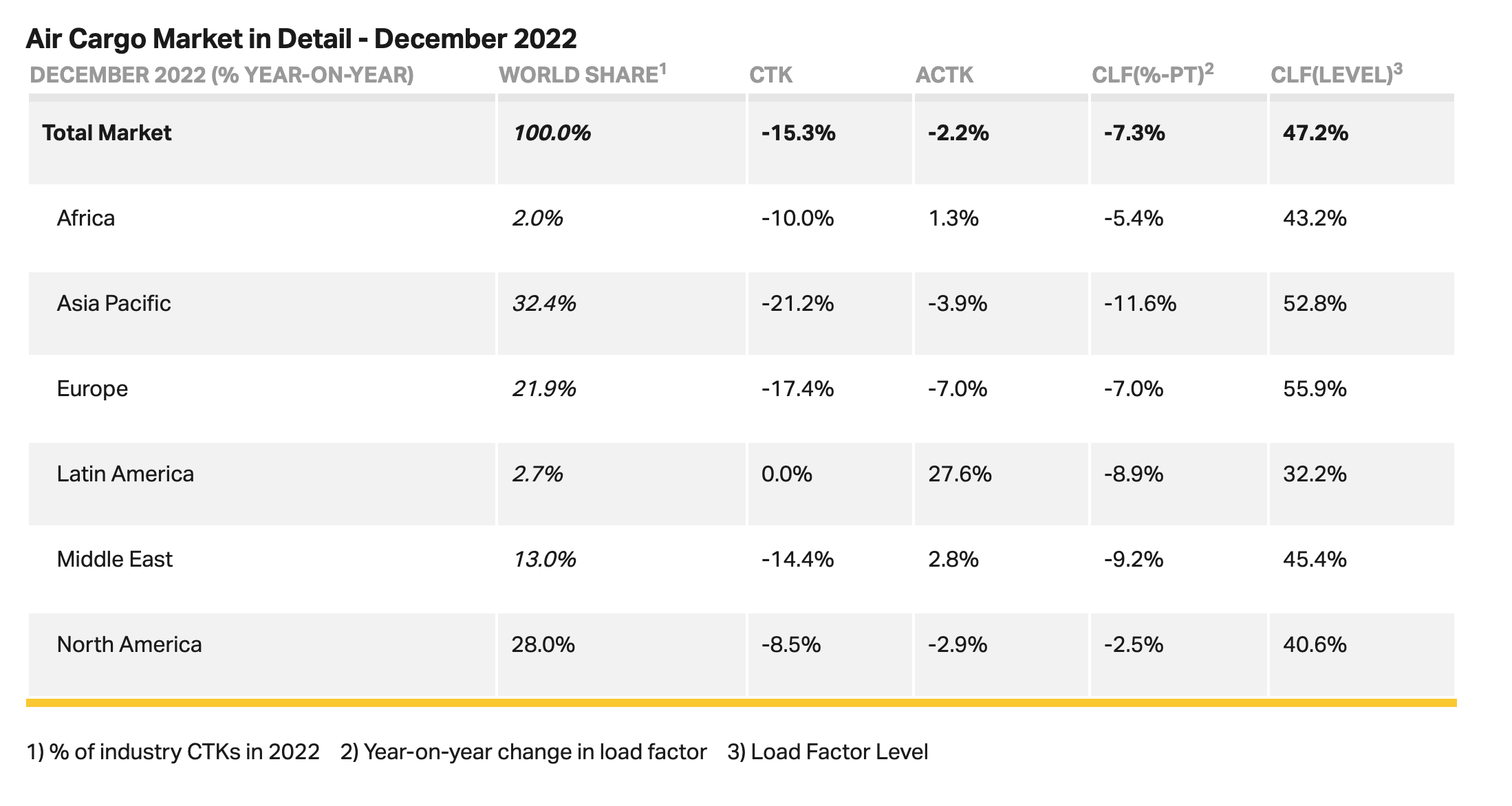Last Year’s IATA Air Cargo Stats Point to Near Pre-COVID Measurements
Global air freight market data suggests only a 1.6% demand drop off compared to 2019.
According to numbers from the International Air Transport Association (IATA), 2022 full-year demand for air freight came up short compared to 2021 levels. However, it did come close to reaching that of 2019.
Last year’s global full-year demand measured in cargo tonne-kilometers (CTKs), fell 8.0% compared to 2021 (down 8.2% for international operations). Compared to 2019, it was down 1.6% (both global and international). When it came to 2022 capacity, it was 3.0% above 2021 (+4.5% for international operations). When analyzed alongside 2019 (pre-COVID-19) levels, capacity declined by 8.2% (a 9.0% decrease for international operations).
IATA points out that December 2022 saw a weakening in performance, as global demand was 15.3% below 2021 levels (-15.8% for international operations). Meanwhile, global capacity was 2.2% below 2021 levels (‑0.5% for international operations).

“In the face of significant political and economic uncertainties, air cargo performance declined compared to the extraordinary levels of 2021,” notes Willie Walsh, IATA’s director general. “ … The continuing measures by key governments to fight inflation by cooling economies are expected to result in a further decline in cargo volumes in 2023 to -5.6% compared to 2019. It will, however, take time for these measures to bite into cargo rates.”
Read more about the latest air cargo statistics here.